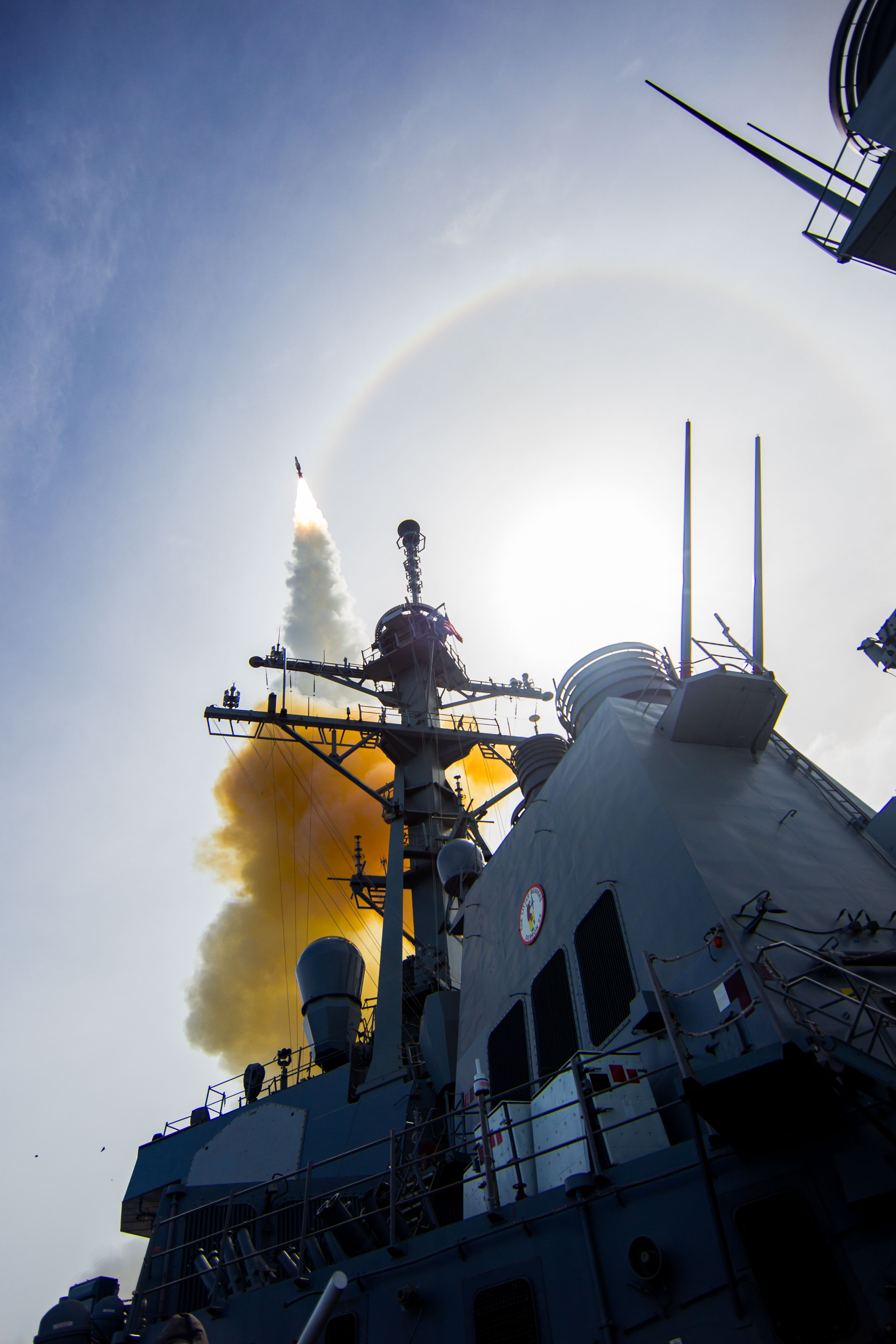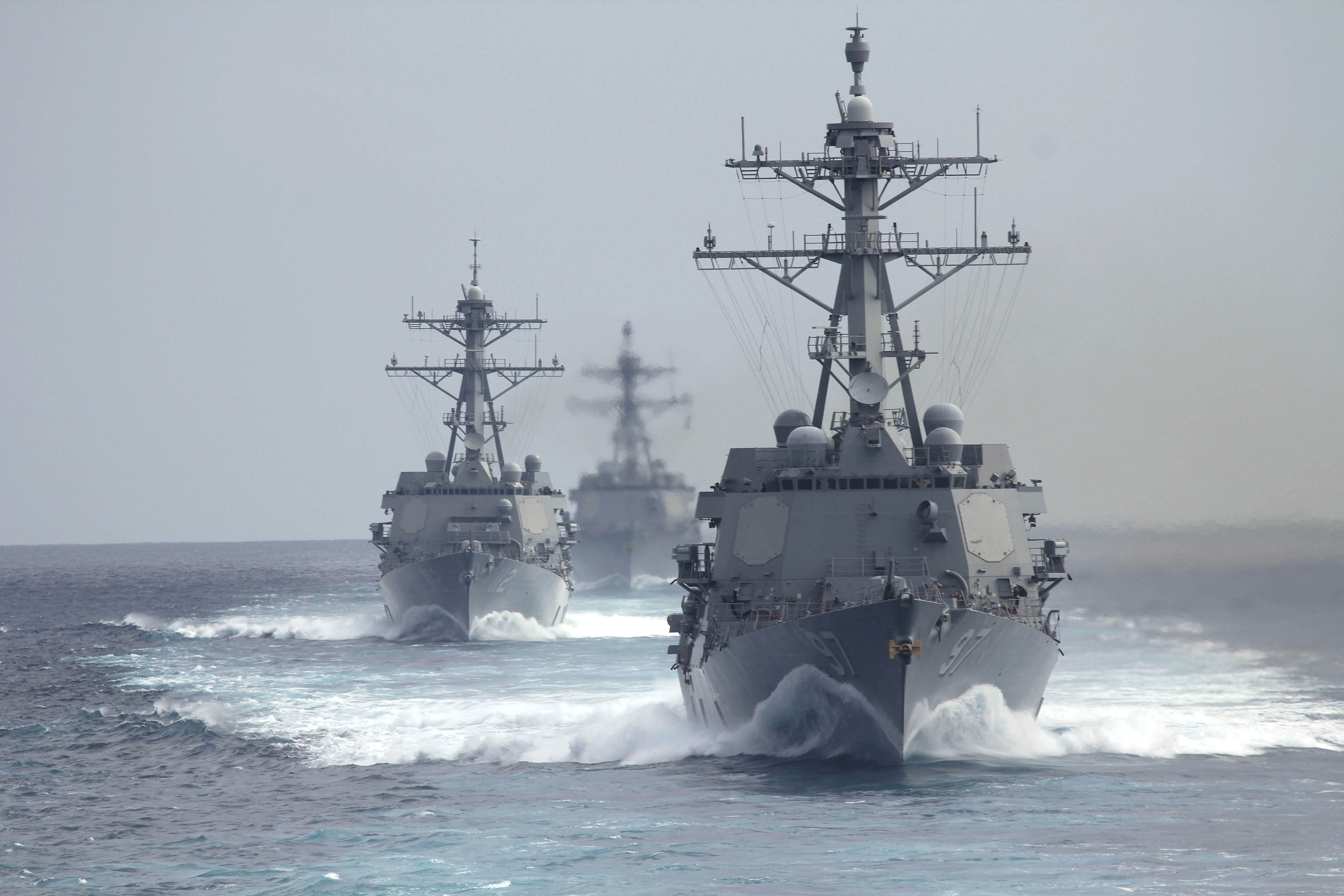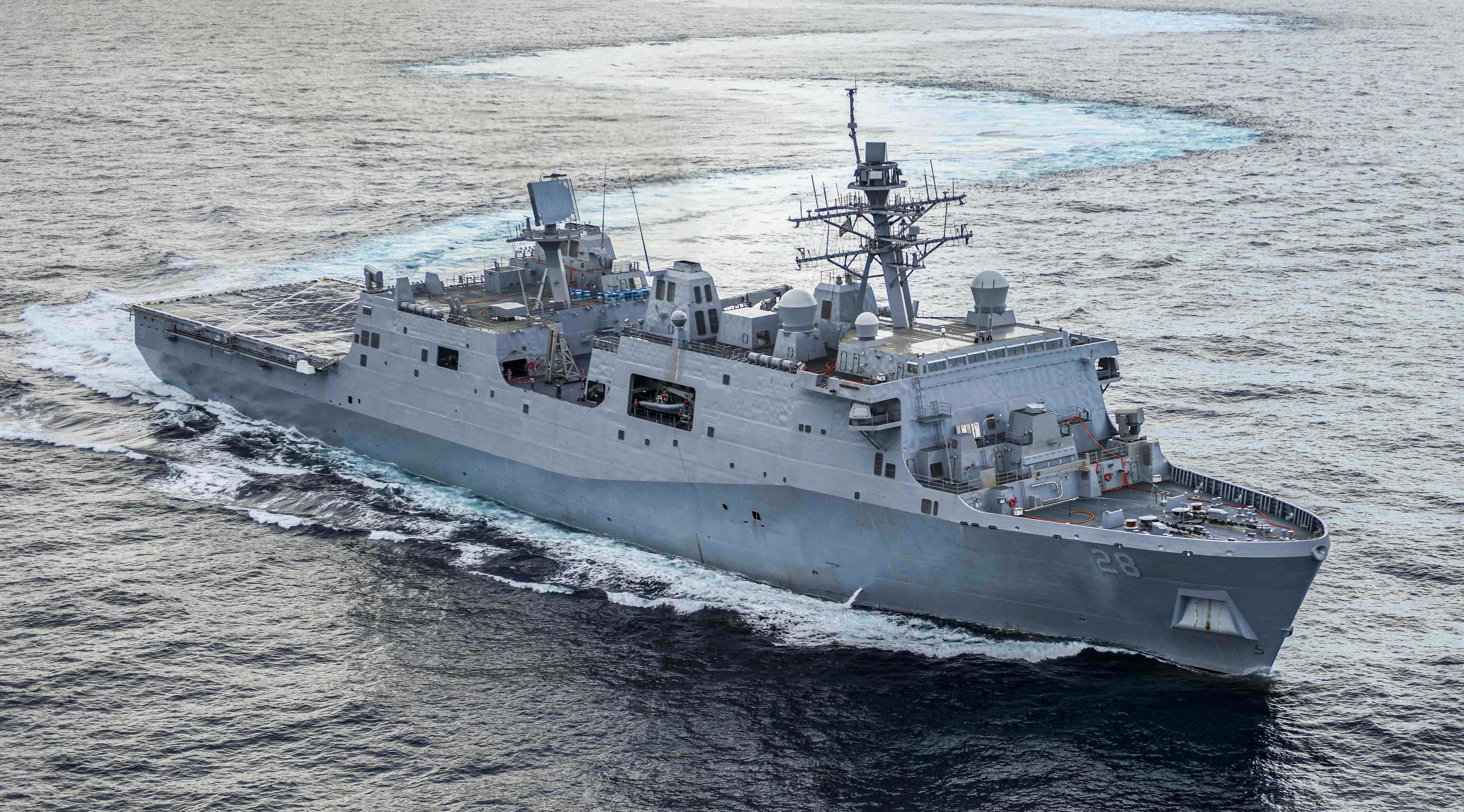
The Navy’s reduced combat system modernization schedule for its legacy Arleigh Burke guided missile destroyers (DDG-51) puts the surface fleets ability to tackle ballistic missile defense (BMD) tasks — as well as protect high value ships like aircraft carriers — at risk, the service’s director of surface warfare told Congress.
What’s at issue is the balance between the global proliferation of cheaper and more effective guided weapons, U.S. military demand for ballistic missile defense ships, reduced modernizations to existing destroyers and the current two-a-year DDG build rate, Rear Adm. Peter Fanta testified before the House Armed Services subcommittee on sea power and projection forces last week.
At the moment, the current fleet of 88 large surface combatants — the Navy’s generic term for guided missile destroyers and cruisers — could handle a so-called near-peer adversary but is on a trajectory to fall behind in the next decades.
“If you ask me about the fight today and can we win against the near-peer adversary? The answer is, absolutely,” Fanta said in his opening remarks to the subcommittee on June 18.
“But that is today.”
The equation is set to change as more modern weapons and delivery platforms enter the global arms markets.
“We see risk in tomorrow’s fight. If we do not modernize fast enough, if we do not build fast enough, if we slow down our build rate of large surface combatants, if we slow down our modernization rate of large surface combatants, there will be a risk when the advanced threats arrive in numbers from the development stages they are in now to a production stage from a potential adversary sometime in the next decade-plus,” Fanta said.
Most of the current crop of destroyers can handle protect against one type of threat at a time — BMD or the traditional air warfare (aircraft and cruise missiles). The latest Baseline 9 modification to the Burke’s Aegis combat system upgrades the ship’s systems to handle both simultaneously.
“My requirement at this point is 40 advanced capability ships that have the capability of both knocking down an incoming ballistic missile while simultaneously looking for and firing upon an incoming cruise missile that’s at the surface of the ocean,” Fanta told chair Rep. Randy Forbes (R-Va).
”So that is a minimum of 40 advanced capability ballistic missile ships.
As reported by USNI News in April, much of the calculus behind the increased risk and demand is due to requirements for large surface combatants to protect high value assets like aircraft carriers and amphibious ready groups (ARG) from traditional threats like aircraft and of ballistic missiles.

While the Navy had originally planned to upgrade all of its 62 Burkes to Baseline 9, the Navy elected as part of the FY 2015 budget submission to reduce the modernizations for its 28 Flight I and II destroyers and only funded seven Baseline 9 ships.
The modernization effort shrunk further as part of the FY 2016 budget submission when the service elected to further reduce its modernization profile cutting five of the more modern Flight IIA ships out of the Baseline 9 loop for a $500 million savings in its five year funding plan.
The ships with the legacy BMD systems “are perfectly capable of handling advanced threats, but just in that one BMD capability. What we don’t want to do is mix the peacetime presence requirement of those — I won’t call them lesser capable, but baseline capability ballistic missile ships with the advanced ones, Fanta said.
“I need to beat a high-end competitor at sea in the middle of a fight in the middle of the ocean.”
Without sufficient numbers of Baseline 9 ships, the service may need to increase the size of the carrier strike group (CSG) from five large service to handle the demands of both BMD and traditional air warfare, USNI News understands.
The state of U.S. surface forces reflect the ongoing funding struggles in the Navy as the service faces the looming $100 billion bill for the dozen planned Ohio Replacement nuclear ballistic missile submarines (SSBNs) the service has deemed its number one priority.
The Navy has asked Congress to alleviate the budget challenge so the cost will not reach into other program.
“So my biggest concern is downstream is essentially Ohio replacement and the potential impact it could have on our capability and capacity if we are tasked to fund that entirely,” Rear Adm. Victorino Mercado, director of the Navy’s assessment division (OPNAV N81), told the panel.
“Right now we can do, just like [Rear Adm.] Fanta said in the opening, we can deal with a near-peer competitor with the numbers we have. My concern is the effect on that capability and capacity depending on how we address the build of an Ohio replacement.”





